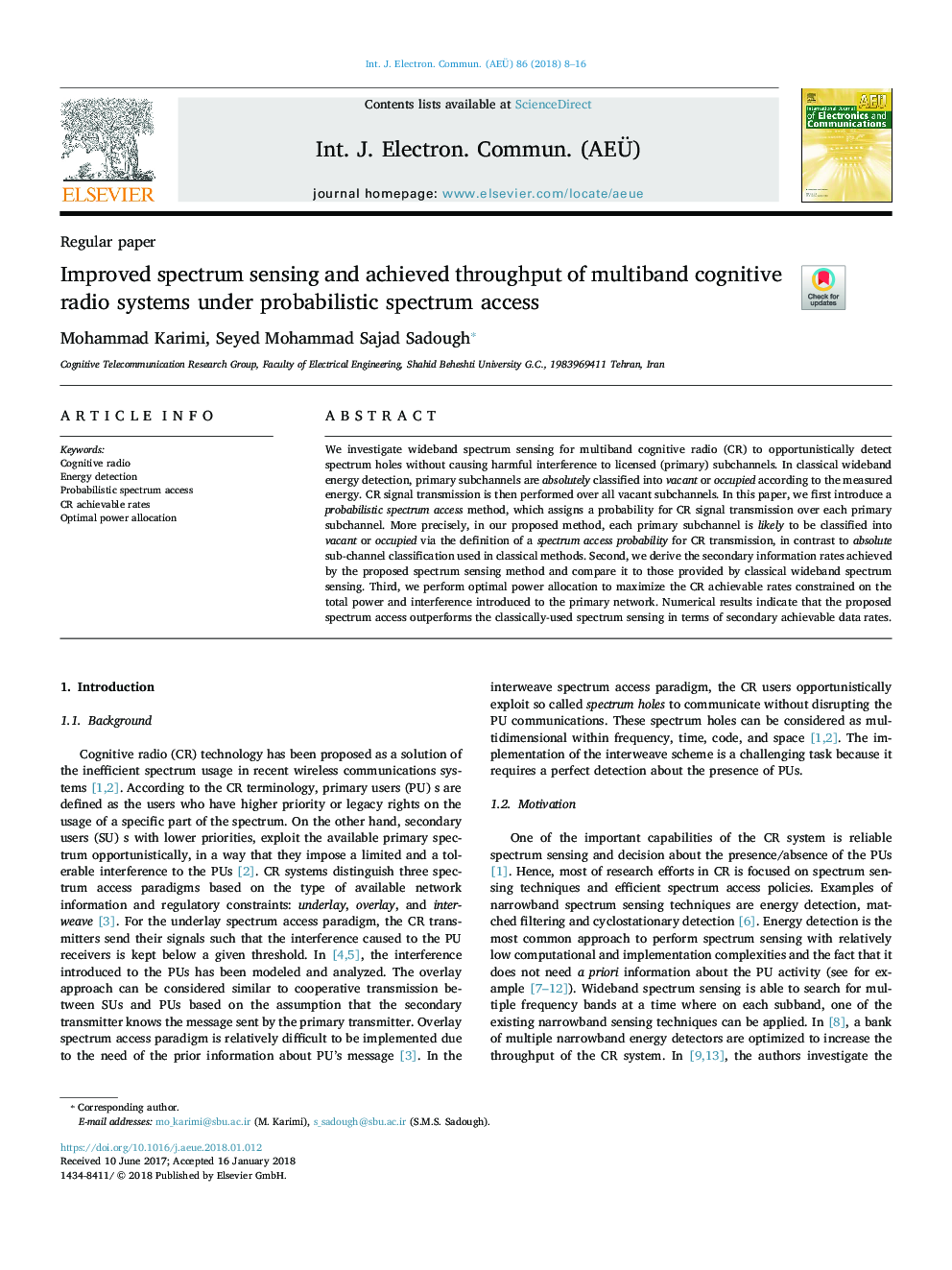| Article ID | Journal | Published Year | Pages | File Type |
|---|---|---|---|---|
| 6879435 | AEU - International Journal of Electronics and Communications | 2018 | 9 Pages |
Abstract
We investigate wideband spectrum sensing for multiband cognitive radio (CR) to opportunistically detect spectrum holes without causing harmful interference to licensed (primary) subchannels. In classical wideband energy detection, primary subchannels are absolutely classified into vacant or occupied according to the measured energy. CR signal transmission is then performed over all vacant subchannels. In this paper, we first introduce a probabilistic spectrum access method, which assigns a probability for CR signal transmission over each primary subchannel. More precisely, in our proposed method, each primary subchannel is likely to be classified into vacant or occupied via the definition of a spectrum access probability for CR transmission, in contrast to absolute sub-channel classification used in classical methods. Second, we derive the secondary information rates achieved by the proposed spectrum sensing method and compare it to those provided by classical wideband spectrum sensing. Third, we perform optimal power allocation to maximize the CR achievable rates constrained on the total power and interference introduced to the primary network. Numerical results indicate that the proposed spectrum access outperforms the classically-used spectrum sensing in terms of secondary achievable data rates.
Related Topics
Physical Sciences and Engineering
Computer Science
Computer Networks and Communications
Authors
Mohammad Karimi, Seyed Mohammad Sajad Sadough,
